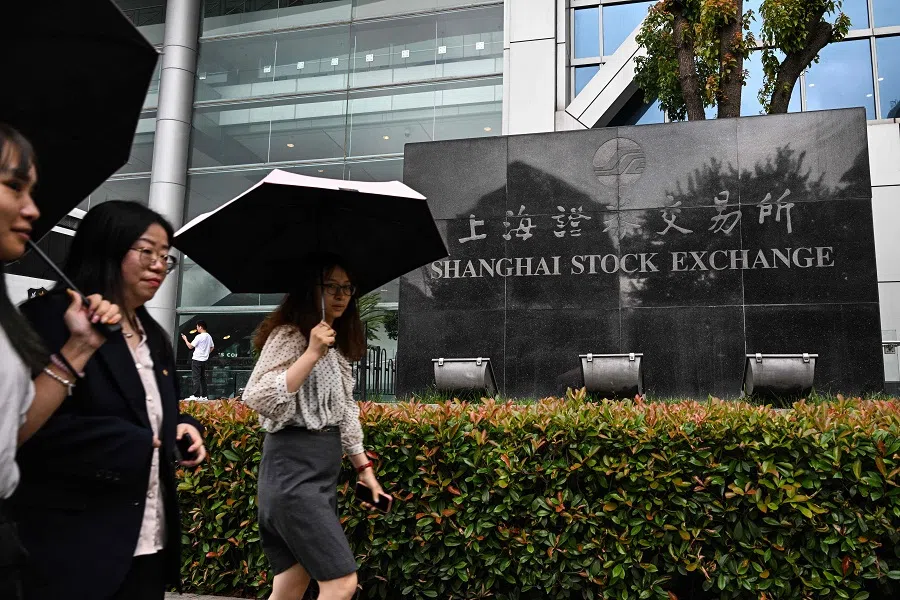China’s third plenum doubles down on free trade zones
China is counting on its 22 free trade zones and only free trade port in the southern Hainan province to give its reform and opening up a lift. But headwinds in the tense geopolitical environment could keep foreign investment at bay. EAI deputy director Chen Gang explains.

The Chinese Communist Party (CCP) decided to expand the country’s economic opening at its third plenum in July 2024, emphasising the strategic role of China’s 22 free trade zones (FTZs) and the only free trade port (FTP) in the southern Hainan province.
Amid sluggish economic performance in recent years, China’s reform and opening up has entered uncharted waters, after all the low-hanging fruits have been picked. The plenum decided to jumpstart economic restructuring by doubling down on the FTZs/FTP that are piloting laissez-faire measures like offshore financing, duty-free trading and cross-border data transaction. The FTZs/FTP have an advantage in establishing cross-border e-commerce zones, commodity trading centres and global distribution hubs, all of which were highlighted by the plenum’s decision.
A gradual opening
China in 2013 launched its first FTZ in Shanghai, which introduced the first negative list for foreign investment. A negative list indicates the areas in which investment is prohibited or restricted, while all other areas are presumed to be open.
Five years later, China went further by announcing the plan to transform the entire Hainan island into a pilot free trade port, experimenting with lower taxes and looser visa rules to attract businesses and individuals. The Hainan FTP, unveiled by Chinese President Xi Jinping himself, aims to set up an independent customs regime by 2025.
Hainan island, which experienced two rounds of economic meltdowns triggered by policy failures in the early 1990s and 2010s, is now given a third chance at economic take-off after the plenum endorsed innovations in customs, taxation, data and foreign exchange regulations.

Hainan island, which experienced two rounds of economic meltdowns triggered by policy failures in the early 1990s and 2010s, is now given a third chance at economic take-off after the plenum endorsed innovations in customs, taxation, data and foreign exchange regulations. The income tax rates of companies in encouraged industries and individuals in Hainan have been capped at 15%. After 2025, all goods imported from overseas will be exempt from import duties, except for those listed in the to-be-formulated Negative List of Commodities Subject to Import Taxes.
Currently, the Hainan FTP and Hengqin FTZ (Zhuhai city, Guangdong province) offer import duty exemption on goods processed for domestic sale where the added value exceeds 30%. The policy has benefited local processing companies that rely on imported raw materials.
Partly lifting the ‘Great Firewall’
Thanks to the loosened regulations on cross-border data transfer, the FTZ/FTP’s digital economy has been growing fast. Since 2020, the central government has allowed Hainan FTP to start pilot measures that facilitate cross-border data flow. Now, residents in the FTP can apply for unrestricted internet access to overseas websites like Facebook, Twitter and YouTube.
Some FTZs/FTP may partly lift the “Great Firewall” that bans many foreign websites inside China to lure foreigners. One option is to create a special “gathering zone” where people can access overseas sites.
In Hainan, low-carbon electricity capacity like nuclear and wind has been added to power the energy-guzzling digital industry.

Places like Hainan FTP and Shanghai FTZ are building computing hubs and data centres for future global data processing. In Hainan, low-carbon electricity capacity like nuclear and wind has been added to power the energy-guzzling digital industry.
Not all rosy
That said, headwinds faced by China’s FTZs cannot be ignored. The local business environment can be complex, with regulations difficult to understand or implement under certain circumstances. Foreign businesses may face regulatory risks or bureaucratic barriers from local officials who try to protect local industrial interests. While FTZs are designed to reduce trade barriers, there can still be intangible restrictions on market access.
The plenum has proposed a range of measures to attract foreign investment, encouraging further market opening in sectors from which foreign investors have previously been limited, such as telecommunications, the internet, education, culture and healthcare. However, such restrictions will not be easily lifted for foreign businesses, even within the FTZs.
Companies operating within FTZs might face risks related to intellectual property rights. Despite the plenum’s emphasis upon the protection of intellectual property rights, the enforcement of relevant laws and regulations depends on the willingness and capability of local cadres.
The economic underperformance can impact the attractiveness of China’s FTZs. The economic growth is anaemic, as the geopolitical uncertainty casts a pall over the world’s second largest economy. The property markets, including those in the FTZs, have become a debt-laden albatross. Fiscal support remains poor. Aversion to Chinese markets among international investors has become more entrenched.
The escalation in geopolitical tension, especially the so-called “small yard, high fence” policy adopted by the US, also changes the cost-benefit analysis of China’s economic liberalisation policy, including its FTZ initiative. The challenging external environment, with the prospect of former President Donald Trump winning the US election, increases national security concerns and self-reliance inclination in China, which may weaken reformist voices in the FTZs.
China’s trade disputes and geopolitical tensions with Western countries have increased risks for any investment in the FTZs.

As almost all FTZs rely on overseas supply and market, they are vulnerable to future disruptions in global supply chains. China’s trade disputes and geopolitical tensions with Western countries have increased risks for any investment in the FTZs.
Given the gloomy economic outlook and tightened ideological control, attracting and retaining skilled talent in FTZs can be challenging. The low income tax rate alone may not be sufficient to lure overseas talents who are concerned about long-term political or economic trajectory.
The plenum decided to establish a unified national market, which can cause misalignment between FTZ regulations and national policies.
Although the third plenum’s main theme was on reform and opening, these measures reflected technical adjustments rather than strategic shifts. China’s self-reliance and national security priorities continue to shape the CCP’s economic policies, so the openness of FTZs will rely on the leadership’s judgement of international and domestic situations.
The plenum decided to establish a unified national market, which can cause misalignment between FTZ regulations and national policies. For example, goods entering the Chinese mainland from Hainan FTP will be subject to import taxes after 2025, when the FTP achieves independent customs operations. This will contradict Beijing’s target of building a unified national market and create policy inconsistencies. More coordination and explanations are needed from the government to defuse such confusion.
Despite these challenges, FTZs/FTP are crucial to China’s economic transformation and opening up in the next five years. The plenum proposed over 300 reforms to be completed by 2029, with FTZs being essential for expanding foreign trade and investment, facilitating data transfer and upgrading industries. They also offer opportunities for foreign and domestic businesses, as long as these FTZs can ensure a level playing field for everyone.

![[Big read] Paying for pleasure: Chinese women indulge in handsome male hosts](https://cassette.sphdigital.com.sg/image/thinkchina/c2cf352c4d2ed7e9531e3525a2bd965a52dc4e85ccc026bc16515baab02389ab)



![[Big read] How UOB’s Wee Ee Cheong masters the long game](https://cassette.sphdigital.com.sg/image/thinkchina/1da0b19a41e4358790304b9f3e83f9596de84096a490ca05b36f58134ae9e8f1)